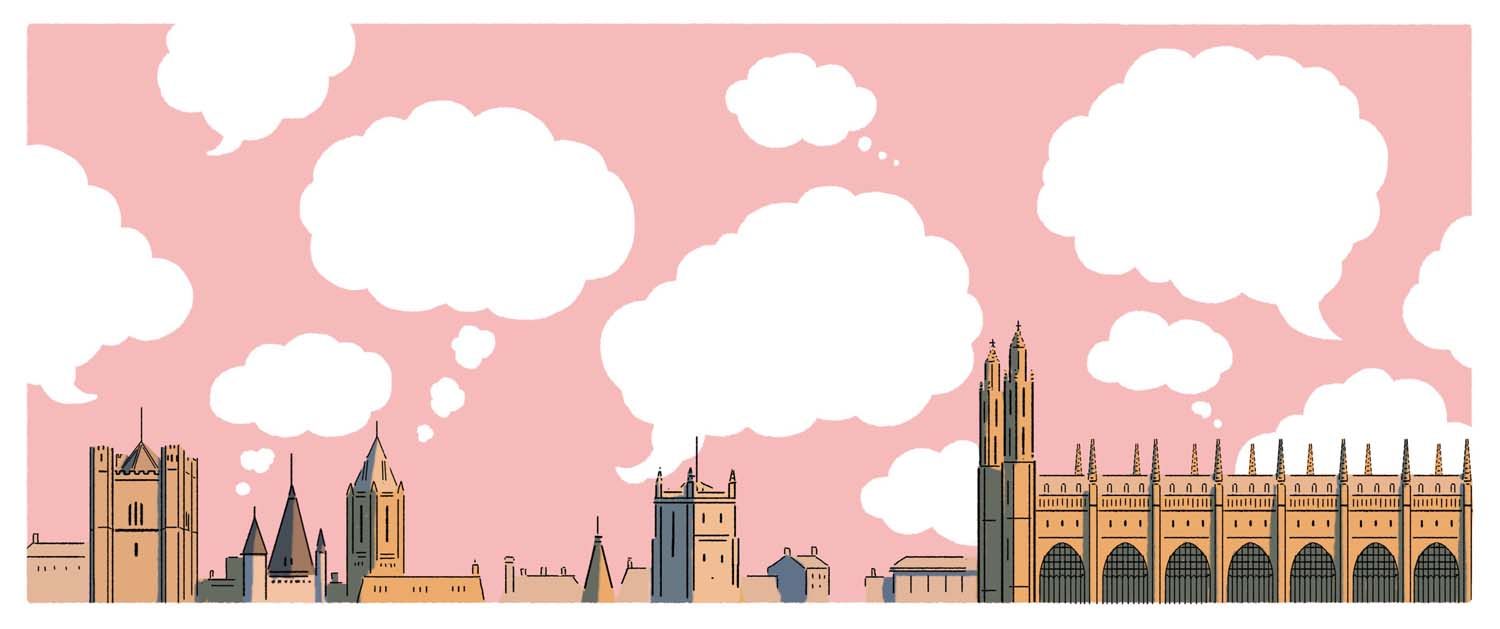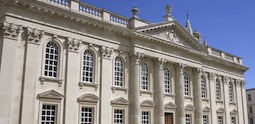Inbox: CAM 99
Editor’s letter
Welcome to the Easter Term edition of CAM. A £2bn turnover. Global reach. More than 30,000 brilliant – and independent – thinkers. And a governing system that has evolved over 800 years. So what does it really take to lead one of the – forget that – the greatest university in the world? From July, Professor Deborah Prentice becomes Cambridge’s seventh full-time Vice-Chancellor; we find out what the job entails.
Meanwhile, we thought it was time CAM entered the culture wars. When is it OK to laugh? Who gets to make the jokes? When is enough? What is never funny? Welcome to the 18th-century culture wars – and the Great Laughter Debate. Find out whether you’re crossing an (18th-century) line.
Elsewhere, Professor Rachel Oliver explains why gallium nitride – the material that powers LEDs – could power the future, and we introduce a piece of ‘Emergency Education’ on Irish history.
On these topics – and on all things Cambridge related – we look forward to your contribution to the debate, by post, email or on social media.
Mira Katbamna (Caius 1995)
Inbox
Seeking refuge
The mention of an anti-Nazi refugee (City of Refuge, CAM 98) brought to mind two Spanish scholars whom I knew in the 1950s. One was Dr Batista i Roca, a distinguished historian who had represented autonomous Catalonia in Britain during the Spanish Civil War of 1936-1939, and had stayed on. Another was a Sanskrit scholar from Majorca whose surname was Mascarò. I wonder if there were any other refugee Spanish academics in Cambridge after Franco’s victory in 1939.
Michael Alpert (Downing 1954)
My father was one of the LSE students evacuated to Cambridge early in the Second World War as per your intriguing article. He’d told me that he had been assigned to Peterhouse; I now learn that this was the agreement regarding all such LSE students. I had always assumed it was down to someone in Admissions with a sense of humour, with my father’s name being Peter Howe!
Andy Howe (Emmanuel 1976)

Evolving origins
Your article on Evolving Origins (CAM 98) reminded me of a letter Charles Darwin wrote to his son about playing hockey on ice when he was at Shrewsbury School from 1818. This was many years before the Canadians, who believed they invented their national sport. In recognition of Charles Darwin’s contribution, two French Canadians wrote On the Origin of Hockey (published in 2014), in a deliberate nod to Darwin’s seminal work. It is understood that when a student at Cambridge, Darwin preferred outdoor sports to studying, so there is every possibility he also played ice hockey on the Fens.
Nigel Fenner (Downing 1981)
Artificial Intelligence
I am reassured by Professor Korhonen’s view that “there is no hint of consciousness in any of the AI mechanisms currently out there – or on the horizon of our research”, and that “what makes us uniquely human is currently missing from the human artificial intelligence.” On the other hand, it’s AI’s lack of humanity that makes me nervous. Imagine AI falling into the wrong hands, and our finding ourselves in combat with a super-intelligent foe: it would be a battle of ‘who’s got the biggest computer?’ – forget morals or ethics. We are a fragile little planet adrift in a vast, cruel universe, and we need to do all we can to protect our survival. Protecting the atmosphere is one facet of this, but another is to ensure we don’t create machines capable of destroying humanity; because if they can, they will.
Orlando Murrin (Magdalene 1976)
Anna Korhonen is illuminating and reassuring about the status of artificial intelligence, but I think she neglects the fact that the power of machines lies in their physical as well as their cognitive capabilities. Unlike humans, they are well adapted for space travel, for instance. In any case, the question of who holds the balance of power may eventually become irrelevant. It’s not unknown for the master or mistress to marry the servant. If so, what sort of offspring would that produce?
Paul Lovatt-Smith (Robinson 1980)
Underground pollution
As the originator of the 1995 nanoparticle hypothesis to explain cardiac effects of air pollution, and as someone who investigated particles in the London Underground in 2005, I can inform your readers that nanoparticle concentrations in the tunnels are far lower than in the air in the streets above. They are also lower than in the average kitchen with a gas hob. Underground they are primarily iron, derived from friction of wheels on brakes and rails; above ground they derive from vehicle and domestic emissions, contain carcinogens and are of proven toxicity. There is not to date any evidence to suggest the tube-generated particles are toxic and, as someone who suffered a heart attack in London in 1999, until vehicle fumes have been eliminated above ground, the tube will remain my preferred method of getting about London.
Anthony Seaton (King’s 1956)
A famous experiment in the 1920s showed that the air of a fashionable Paris salon supported five million bacteria to the cubic metre. Since we inhale about a hundredth of a cubic metre with every breath, that equates to around 50,000 bacteria each breath. Most of these are tiny rafts of skin scales – about 10 billion of which (about 1.5 grams) peel off each of our bodies every 24 hours. That grey dust that settles on the top of your wardrobe is likely to be 90 per cent skin. No doubt a lot of that black dust in the Underground is skin too. Fortunately most of the bacteria released are commensals – vital to the ecology of the human skin. But more worryingly, when I wrote my book, The Life That Lives on Man, in 1976, it had just been found that viruses could travel within skin scales too, though it had not then been established whether these came from the bloodstream.
Mike Andrews (St John’s 1957)
Write to us
We are always delighted to receive your emails, letters, tweets and facebook posts.
- By email
- cameditor@alumni.cam.ac.uk
- By writing
- CAM, 1 Quayside, Bridge Street, Cambridge, CB5 8AB
- By Twitter
- @Cambridge_Uni
- By Facebook
- facebook.com/cambridgealumni
Please mark your letter ‘For publication’. Letters may be edited for length.



